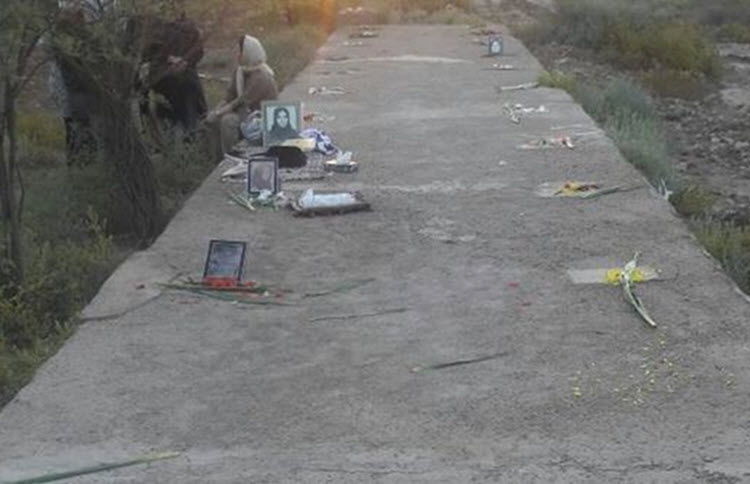
Iran Focus
London, 27 July – Human rights activist Shadi Sadr has reported that in the city of Ahvaz, southwestern Iran, mass graves of political prisoners including inmates who were executed in the late 1980s have been razed.
The Justice for Iran website published a photo on July 25th captioned, “This is a mass grave site in Ahvaz, Iran. At least 44 political prisoners executed in 1988 were secretly buried here. In the following years, the authorities turned the site into a rubbish dump. Now, the site is at imminent risk due to a road-widening project. There are fears that it will be destroyed for a ‘green space’ or commercial development.”
According to Sadr, her report is verified, and is based on investigative research, as well as footage, documents, news, and images.
While the graves were razed by hydraulic excavators, they’ve been under tight control and supervision by security agents. The entire operation, which included removal of the tombstones laid by relatives of the victims, took less than 24 hours. It seems apparent that authorities desired little attention, eyewitnesses told Justice for Iran.
Sadr cited relatives of political prisoners executed in late 1988 while serving their prison terms, “In 1988 and in the heat of executing political prisoners across Iran, the bodies of at least 44 male and female inmates in Ahvaz were secretly buried in an unmarked mass grave in the city’s Padadshahr neighborhood.”
In fact, an eyewitness, Eissa Bazyar, testified that he saw bodies buried overnight in freshly dug mass graves in the late 1980s in Ahvaz, according to Justice for Iran.
Relatives of the victims believe that the mass graves were immediately paved over to prevent the families from finding the burial place.
Sadr notes, “The location of the graves was used as a garbage dump and piling up building debris to cover it up from the public eye and deprive the prisoners’ relatives access to the tombs.”
In late 2017, the excavation operation by the municipality of Ahvaz began, but was immediately met by widespread protests. Justice for Iran, along with Amnesty International (AI), published a special report on the mass graves two months ago and warned the Iranian authorities, “Mass graves are crime scenes that require professional forensic expertise to undertake exhumations and ensure preservation of evidence and accurate identification of bodies. By desecrating the site, the authorities will be destroying vital evidence that could one day be used to shed light on the number and identity of those killed in state custody.”
Amnesty’s Deputy Director for the Middle East and North Africa Magdalena Mughrabi stated, “By attempting to destroy the mass grave in Ahvaz, the Iranian authorities appear to be embarking on a sinister and deliberate effort to destroy crucial evidence of their past crimes and deprive the families of the victims of the 1988 mass prisoner killings of their right to truth, justice and reparation. This is a shocking assault on justice that must be stopped immediately.”
Shadi Sadr, in her role as director of Justice for Iran, said, “For years the authorities have inflicted unbearable suffering on the families of the victims of the 1988 extrajudicial executions. They have denied them the right to give their loved ones a dignified burial and forced them to walk through piles of rubbish to visit their dead. Now they are planning to destroy their final resting place and trying to obliterate their memory from history.”
AI and JFI have noted that in in at least seven other cities, authorities have led similar operations, which have also been challenged by the victims’ relatives.
The majority of victims of the mass executions in the late 1980s belonged to anti-Islamic establishment groups, such as the People’s Mujahedin Khalq Organization (MEK). The number of prisoners who were executed by firing squads or hanging are unknown.
The late Grand Ayatollah Hossein Ali Montazeri openly criticized officials and Khomeini’s direct orders that the prisoners be executed. At the time he was serving as the successor of the leader of the Islamic Revolution and Republic. Following his comments, he was stripped of his title and confined to house arrest for the rest of his life.
The victims of the massacre were kept in different prisons in Tehran, and their bodies were buried in unmarked graveyards, including the one known today as Khavaran.